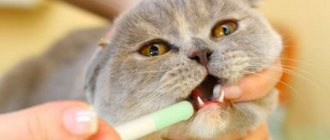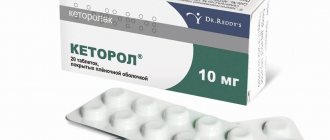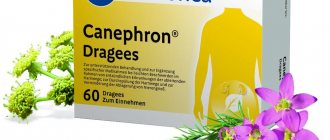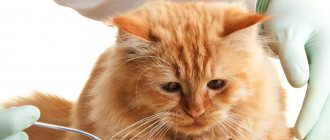In veterinary medicine, the drug "Eufillin" for cats has been used for many years. It has established itself as a highly effective medicine with a pronounced bronchodilator and vasodilator effect. The Latin name of the drug is Euphyllin. The instructions for use describe in detail how to give it to pets, but before you start using Eufillin for cats, you should consult a veterinarian.
Form and composition
The drug "Eufillin" has various forms of release:
- pills;
- powder;
- injection.
The main component of the medicine is aminophylline, which gives Euphyllin many medicinal properties. Thus, during numerous scientific studies on the medication in question, it was possible to identify what therapeutic effects it has, including the following:
- dilates coronary vessels;
- stimulates the work of the heart muscle;
- increases coronary blood flow;
- relaxes the muscles of the bronchi;
- activates urination;
- relieves spasms;
- increases water diuresis.
Indications for use
Eufillin relieves spasms well, relaxes muscles in the bronchi, dilates blood vessels in the heart, has a diuretic effect, etc. Prescribed in the following cases :
- If your cat has chronic or obstructive bronchitis.
- For the treatment of bronchial asthma, as well as to relieve bronchospasm.
- With increased pressure in the vessels of the lungs.
- To improve cerebral circulation.
- For cardiac asthma, especially during attacks accompanied by respiratory failure (Cheyne-Stokes syndrome).
- To relieve cerebral vascular crisis and edema.
- In case of increased intracranial pressure.
- If renal blood flow is impaired.
To whom is it indicated and when will it cause harm?
The vasodilating properties of the drug improve blood circulation.
Veterinarians prescribe Eufillin if a cat has been diagnosed with chronic and obstructive bronchitis, increased pressure in the vessels of the lungs and impaired cerebral circulation. It is also prescribed for cats with bronchial and cardiac asthma, bronchospasms, and also, if necessary, to relieve cerebral edema, normalize renal blood flow and intracranial pressure. Despite the high effectiveness of the drug Euphyllin, it is not always allowed to be given to cats. Thus, the drug is not used in veterinary practice if the pet has the following pathologies:
- cardiopalmus;
- myocardial infarction;
- epilepsy;
- pathologies of the thyroid gland;
- ulcerative lesion;
- personal intolerance to the components of the drug;
- decompensated myocardial dysfunction;
- deterioration of kidney and liver function.
Synonym: aminophylline
White or white with a yellowish tint crystalline powder with a faint odor of ammonia.
Let's dissolve in water.
Euphilin is produced in powder for use in veterinary medicine.
, tablets of 0.15 g, ampoules of 1 ml of 24% solution (for intramuscular administration) and 10 ml of 2.4% solution (for intravenous injection).
It is a mixture of theophylline with 1,2-ethylenediamine. The effect of the drug is due to the inhibition of phosphodiesterase and, as a result, an increase in the accumulation of cyclic adenosine monophosphate in tissues. In addition, the drug appears to block adenosine receptors and prevent calcium ions from entering cells.
Eufillin in animals relaxes the muscles of the bronchi, relieving bronchospasm.
Improves blood flow in the heart and kidneys, reduces pulmonary vascular resistance, reducing pressure in the pulmonary circulation. It has a positive inotropic and moderate diuretic effect.
Inhibits the release of allergy mediators from mast cells, stimulates the central nervous system, the respiratory center, and enhances the release of adrenaline by the adrenal glands.
It is recommended to use aminophylline in veterinary medicine for circulatory failure, polyuria, and overdose of cardiac glycosides at a dose of 0.15 ml/kg of a 2.4% solution intravenously slowly with isotonic sodium chloride solution (5-20 ml). If acute respiratory failure, in particular pulmonary edema, is diagnosed, 1-4 ml of a 2.4% aminophylline solution diluted in 5 ml of a 20% glucose solution is slowly injected intravenously. Eufillin is an effective remedy for removing dogs and cats from drug-induced sleep. Small animals are slowly administered intravenously with 0.1 ml/kg of a 2.4% solution of aminophylline with glucose.
When treating dogs with aminophylline with catarrhal bronchopneumonia, especially in severe cases, a jet or drip administration of Ringer's solution to which aminophylline is added is indicated - 5-24 mg/kg. In cases of acute respiratory distress in cats, aminophylline can be used intramuscularly or intravenously at a dose of 2-4 mg/kg.
Animals are also treated with aminophylline as a diuretic for edema of cardiac or renal origin as part of combination therapy.
The administration of aminophylline-containing drugs is contraindicated in cases of sharply low blood pressure, paroxysmal tachycardia, extrasystole, epilepsy and heart rhythm disturbances.
Instructions for use
Dosages of "Eufillin" are calculated by a veterinarian individually for each cat, depending on the condition, characteristics of the course of the disease and its weight.
In most cases, the cat is prescribed medication in the form of injections of 3-5 mg per kilogram of the pet’s weight, 1-2 times a day. The solution is given orally to the cat at a dose of 5-7 mg per 1 kg of body weight, divided into 2-3 doses. For purrs with a severe condition, a microenema is indicated. Typically, the duration of the therapeutic course is 5-7 days; if necessary, the duration of treatment can be increased, but not more than 2 weeks.
Dosage and method of administration
Prescribed, as a rule, intravenously, orally, rarely in the form of microenemas or intramuscularly. At the same time, the doctor calculates the dosage of Eufillin for cats depending on the condition and weight of the animal. Everything is purely individual based on the characteristics of the course of the disease. The following dosages are generally prescribed :
- Injections - Daily dose of 3-5 mg of active substance per 1 kg of cat's weight, 1-2 times a day.
- Orally - The daily dose of Euphellin tablets for a cat is 5-7 mg of active ingredient per 1 kg of weight. The calculated amount of the substance is divided into 2-3 doses (morning, lunch, evening).
- Microenema - Used only in severe cases when the benefit outweighs the risk. In this case, the doctor independently makes a calculation based on the cat’s condition and makes a decision on prescribing a microenema.
Eufillin cannot be injected subcutaneously, as it causes irritation of soft tissues. The course of treatment is on average 5-7 days, but not more than two weeks.
Negative side of the medicine
If there are adverse reactions, the use of the medication is stopped.
In veterinary practice, with proper treatment, there have been no cases of harmful effects of “Eufillin” on the body of cats. The official summary describes the following side effects that a pet may experience if the medicine is not administered to it in accordance with the doses recommended by the doctor:
- increased heart rate;
- dizziness;
- diarrhea, vomiting;
- allergic reactions;
- loss of appetite.
"Eufillin" is a serious medicine that can only be used as prescribed by a veterinarian and under his strict supervision. If your cat experiences any adverse symptoms, you should stop treatment and take your pet to a veterinary clinic. The doctor will adjust the therapeutic regimen or replace Eufillin with a safer medicine.
Eufillin for dogs: composition, purpose, dosage, contraindications
In veterinary medicine, the drug "Eufillin" for cats has been used for many years. It has established itself as a highly effective medicine with a pronounced bronchodilator and vasodilator effect.
The Latin name of the drug is Euphyllin. The instructions for use describe in detail how to give it to pets, but before you start using Eufillin for cats, you should consult a veterinarian.
Form and composition
The drug "Eufillin" has various forms of release:
- pills;
- powder;
- injection.
The main component of the medicine is aminophylline, which gives Euphyllin many medicinal properties. Thus, during numerous scientific studies on the medication in question, it was possible to identify what therapeutic effects it has, including the following:
- dilates coronary vessels;
- stimulates the work of the heart muscle;
- increases coronary blood flow;
- relaxes the muscles of the bronchi;
- activates urination;
- relieves spasms;
- increases water diuresis.
Mechanism of disease development
The disease originates from damage to the bronchial mucosa, producing an irritating and inflammatory effect with the release of fluid, which begins to accumulate in the tissues of the respiratory system. As a result, the mucous membrane succumbs to a strong irritant effect and coughing, swelling appears, and exudate provokes shortness of breath.
What other diseases can be diagnosed when a cat coughs ? Read about this in our article.
During chronic bronchitis, the mucous membrane is completely exposed to the harmful effects of microbes, and along with it, inflammation of the bronchial wall occurs. As a result, muscle fibers are replaced by connective tissue cells, causing the bronchi to lose elasticity and contractile function.
To whom is it indicated and when will it cause harm?
The vasodilating properties of the drug improve blood circulation.
Veterinarians prescribe Eufillin if a cat has been diagnosed with chronic and obstructive bronchitis, increased pressure in the vessels of the lungs and impaired cerebral circulation.
It is also prescribed for cats with bronchial and cardiac asthma, bronchospasms, and also, if necessary, to relieve cerebral edema, normalize renal blood flow and intracranial pressure. Despite the high effectiveness of the drug Euphyllin, it is not always allowed to be given to cats.
Thus, the drug is not used in veterinary practice if the pet has the following pathologies:
- cardiopalmus;
- myocardial infarction;
- epilepsy;
- pathologies of the thyroid gland;
- ulcerative lesion;
- personal intolerance to the components of the drug;
- decompensated myocardial dysfunction;
- deterioration of kidney and liver function.
Good to know
- Treatment of piroplasmosis in dogs
- Marfloxin for dogs and cats
- Zoocard in veterinary medicine
- Vetmedin 1.25 mg
- Zoocard for dogs - cardiac medicine
- Zoocard for cats - instructions for use
- Vetmedin 2.5 mg buy.
Information for pet owners. Vetmedin analogue for dogs - Zoocard for cats
- Vetmedin 5 mg 50 pieces (where can I buy? what is the price?)
- Enalapril in veterinary cardiology
- Vetmedin 10 mg buy in Moscow, St. Petersburg (50 tablets)
- Ramipril
- The drug vetmedin (price, indications, contraindications, effectiveness)
- Benazepril
- Vetmedin for cats instructions for use
- CAPTOPRIL for dogs and cats
- Lisinopril for dogs and cats
- Vetmedin tablets for dogs
- Perindopril in dogs and cats
- Fortecor for cats and dogs
- Vetmedin instructions for use, main indications for use
- Vasotope for cats and dogs
- Veterinary drug – Vazosan for cats and dogs
- Vetmedin is a medication prescribed by your veterinarian to treat your dog or cat's heart disease. Price of veterinary medicine in Moscow and dogs
- Furosemide
- Torasemide
- Veroshpiron
- Vetmedin buy - a highly effective cardiotonic drug for animals
- Hypothiazide
- Indapamide
- Amiloride
- Vetmedin reviews from dog and cat owners (vetmedin 1 25 buy)
- Triamterene
- Digoxin
- Dobutamine use in humane and veterinary medicine
- Vetmedin tablets 1.25 buy in Moscow. Vetmedin analogues
- Dopamine
- Instructions for use of Amrinon in humane and veterinary medicine
- Milrinone
- Levosimendan (Simdax)
- Veterinary drug - Pimobendan (vetmedin)
- HartMedine
- Atenolol
- Propranolol
- Metoprolol - instructions for use in humans, dogs and cats
- Nebivolol
- Carvedilol
- Esmolol
- Bisoprolol
- Sotalol
- Diltiazem
- Amlodipine
- Verapamil
- Digoxin
- Strophanthin-K
- Korglykon
- Riboxin for dogs and cats
- Essentiale N —
- "Mildronat" for humans, dogs, cats
- How to calculate the correct dose of digoxin for dogs and cats?
- Pimobendan 1.25 mg, 5 mg, 2.5 mg and 10 mg tablets for small animals. Where to buy vetmedin in Minsk?
- Where to buy pimobendan 5 mg; 1.25 mg; 2.5 mg and 10 mg in Moscow? What price?
- Pimopet GIGI. Tablets 2.5; 5 mg is a cardiac medicine for dogs and cats. Manufacturer's instructions for use. Reviews from doctors
Instructions for use
Dosages of "Eufillin" are calculated by a veterinarian individually for each cat, depending on the condition, characteristics of the course of the disease and its weight.
In most cases, the cat is prescribed medication in the form of injections of 3-5 mg per kilogram of the pet’s weight, 1-2 times a day.
The solution is given orally to the cat at a dose of 5-7 mg per 1 kg of body weight, divided into 2-3 doses. For purrs with a severe condition, a microenema is indicated.
Typically, the duration of the therapeutic course is 5-7 days; if necessary, the duration of treatment can be increased, but not more than 2 weeks.
What is bronchitis in cats?
A cat of any age can get bronchitis, but weakened pets mostly get sick.
Table 1. Classification of bronchitis according to the course of the disease
| Types of bronchitis | Description |
| Spicy | A sharp inflammatory process, one of the forms of diffuse damage to the bronchial tree |
| Chronic | A progressive inflammatory disease of the respiratory system that disrupts the protective and cleansing function of the bronchi |
Table 2. Classification of bronchitis by damage to the bronchi
| Types of bronchitis | Description |
| Macrobronchitis | The inflammatory process spreads in the large bronchi |
| Microbronchitis | Inflammation of the small bronchi |
| Diffuse | Inflammation of the entire bronchial tree |
Table 3. Classification of bronchitis by type of inflammation
| Types of bronchitis | Description |
| Catarrhal | Inflammation of the mucous membranes of the respiratory system |
| Fibrinous | Inflammation with a high content of fibrin in the bronchial secretion - fibrous protein or blood |
| Purulent | Inflammatory changes in the bronchial tree with discharge of purulent secretions |
| Putrefactive | A form of chronic bronchial inflammation, which is accompanied by the development of putrefactive flora |
| Hemorrhagic | Inflammation with bleeding, decreased blood clotting |
Table 4. Classification of bronchitis by origin
| Types of bronchitis | Description |
| Primary | Inflammation of the bronchi, spreading to the entire bronchial tree |
| Secondary | Inflammation complicating another respiratory disease |
Negative side of the medicine
If there are adverse reactions, the use of the medication is stopped.
In veterinary practice, with proper treatment, there have been no cases of harmful effects of “Eufillin” on the body of cats. The official summary describes the following side effects that a pet may experience if the medicine is not administered to it in accordance with the doses recommended by the doctor:
- increased heart rate;
- dizziness;
- diarrhea, vomiting;
- allergic reactions;
- loss of appetite.
"Eufillin" is a serious medicine that can only be used as prescribed by a veterinarian and under his strict supervision. If your cat experiences any adverse symptoms, you should stop treatment and take your pet to a veterinary clinic. The doctor will adjust the therapeutic regimen or replace Eufillin with a safer medicine.
Analogues of the drug
"Eufillin" is a pharmaceutical drug intended for the treatment of diseases in humans. But after undergoing a series of medical studies, it showed effectiveness and safety in veterinary medicine. Many other medications have a similar effect, for example, Neophylline, Theotard, Theophylline, Teopec, Unicontin, Puroxan, Aerophylline. However, whether they can be used to treat cats should be checked with your veterinarian. Using any of them on your own is strictly contraindicated.
Precautionary measures
Improper administration of the drug is dangerous for the animal's life.
It is possible to achieve a speedy recovery of your pet and eliminate any undesirable consequences only if the medicine is used correctly. So, only a medical worker who knows the rate of administration of the solution should inject a cat with Eufillin, and if it is exceeded, the cat faces death. Therefore, the injection is given slowly, while simultaneously monitoring breathing and the general condition of the purr.
Before the injection, the solution must be warmed to room temperature, taking it out of the refrigerator in advance. It is important to consider that Eufillin is incompatible with drugs that contain fructose, glucose and levulose. You should absolutely not use expired medication for your cat. The shelf life of the medicine is 5 years, provided that the solution is stored in a dry place, protected from light, where the air temperature does not exceed 25 degrees Celsius. Small children and animals should not have access to Eufillin ampoules.











